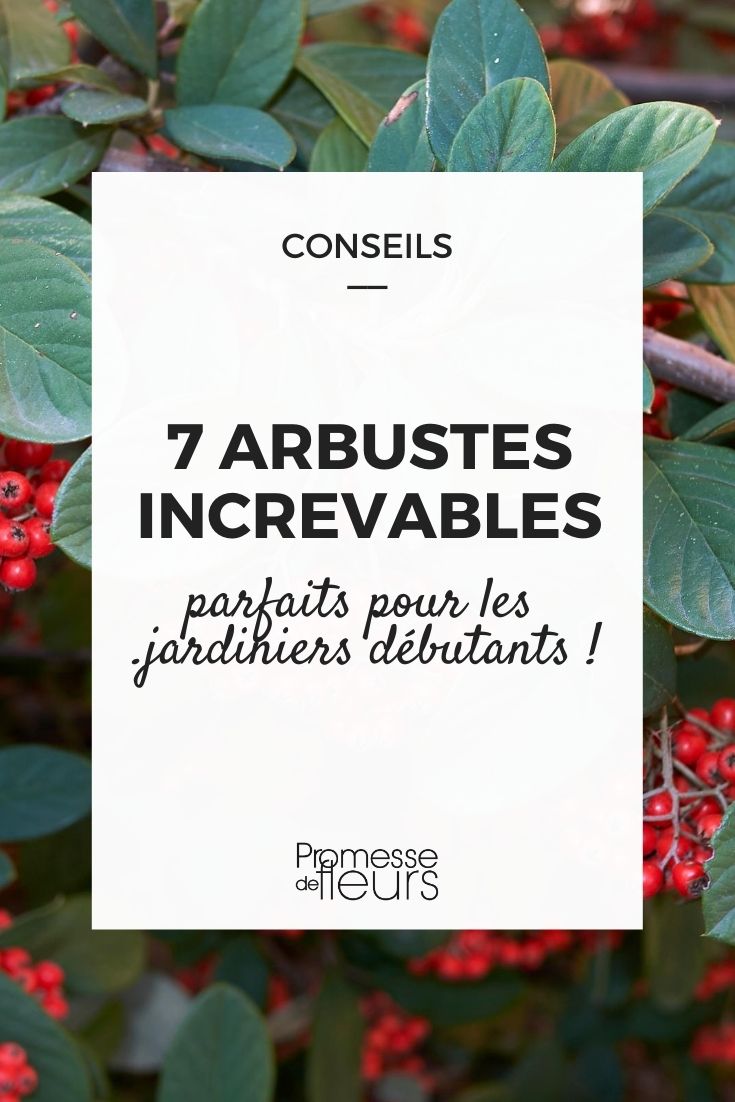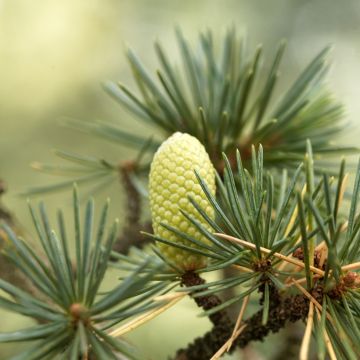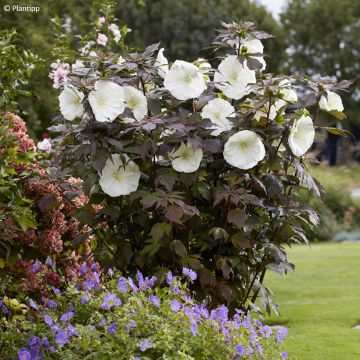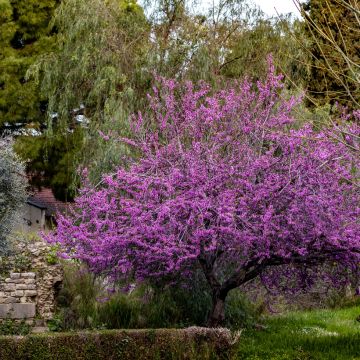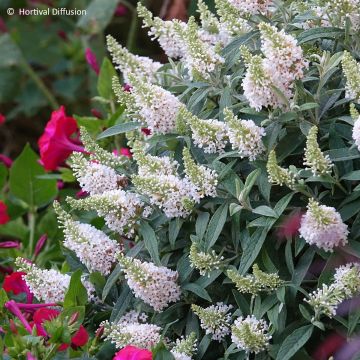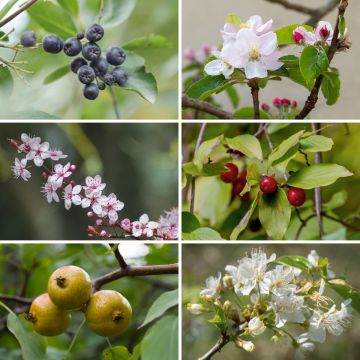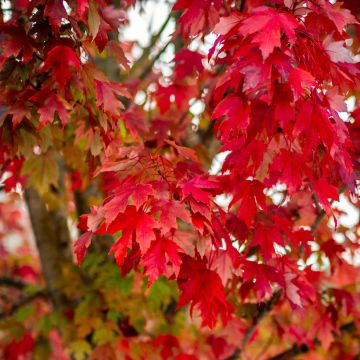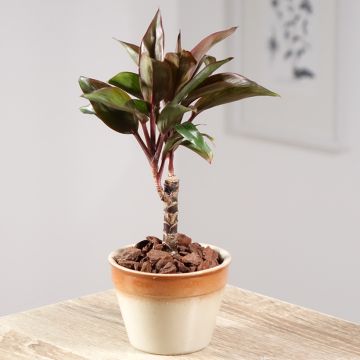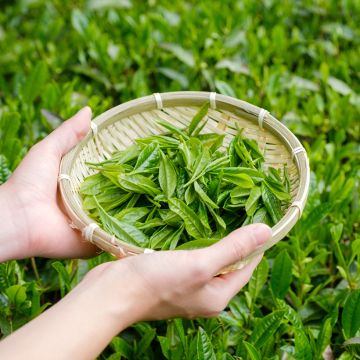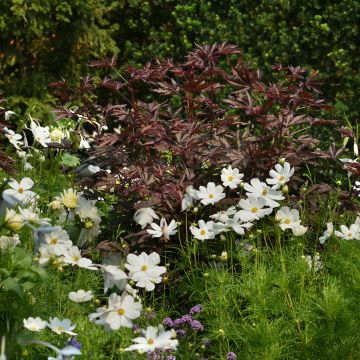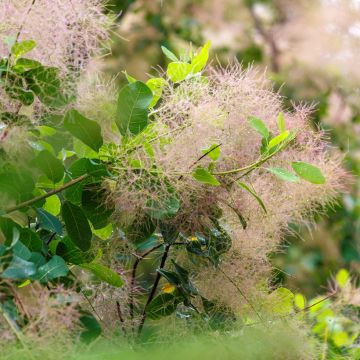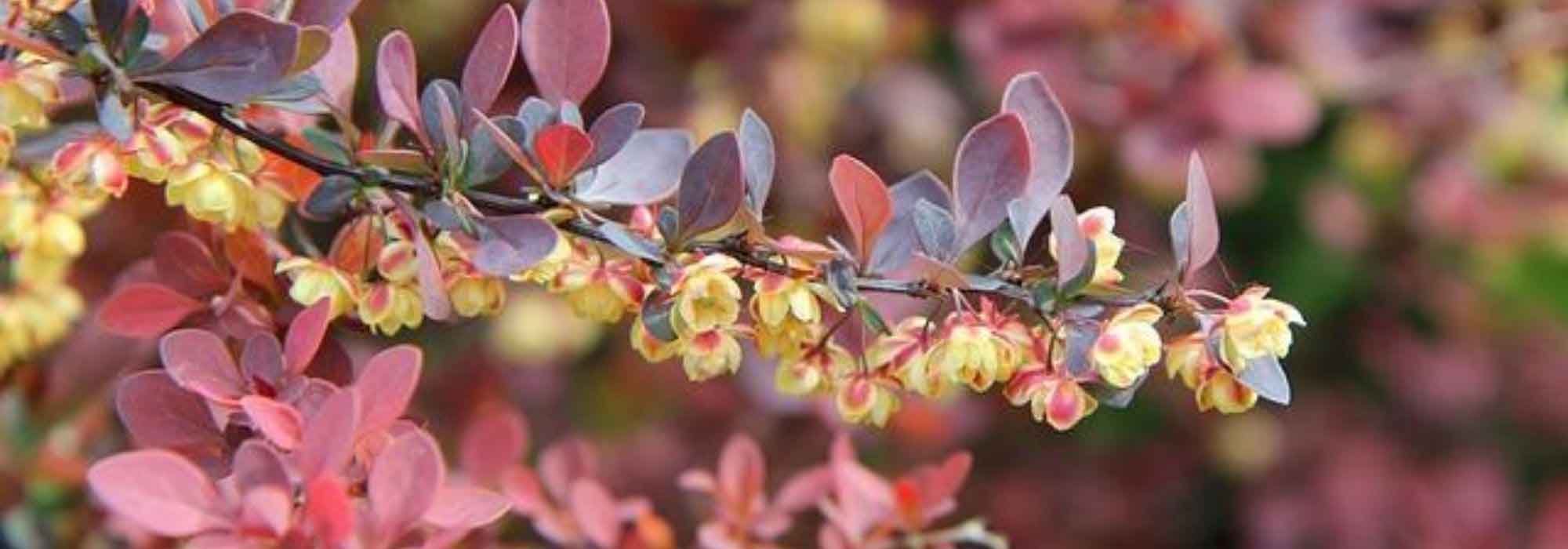
7 indestructible bushes for beginner gardeners
Bushes for every garden and every gardener
Contents
It is always difficult to recommend plants reputed “indestructible“ because once established in the garden they will almost invariably die agonising deaths while their neighbours, plants reputedly more capricious, will thrive. Let’s call it a variant of Murphy’s law or simply gardening’s great uncertainty! Be that as it may, one must admit that some bushes are true “plant gladiators” — so resilient to anything that might fall on their twigs and remarkably accommodating, whether in terms of soil, climate or… care provided.
Discover our top 7 plants considered indestructible!
Berberis thunbergii 'Green Carpet'
Berberis ‘Green Carpet’, originating from Japan, is an elegant groundcover bush whose foliage adopts a lovely pale green in summer before offering its splendid autumn colours, red‑orange. But its foliage is not its only asset: it produces a yellow spring flowering attracting many pollinating insects, followed by bright red fruit that will delight birds in autumn and into early winter.
This fairly low bush (50 cm high with 90 cm spread at maturity) with a bushy, spreading habit is ideal as a groundcover at the front of a border of purple‑leaved bushes to provide a pretty contrast, or paired with variegated or bronze‑ and yellow‑coloured grasses such as Carex for contrast of shapes and colours. Its foliage is deciduous or semi‑evergreen in mild climates and in winter its distinctive nival zone habit in tiers and its mildly aggressive thorns become visible. It can also simply be grown in a pot on a balcony.
Regarding cultivation, Berberis thunbergii in general are, so to speak, practically indestructible. Exposure? It requires little, from sun to partial shade, and will hold its own either way. Soil? No matter! Even clayey, poor or limestone soils do not faze it! Its only weakness, however, is that it dislikes excess water around its roots in winter. In heavy soil, consider improving drainage. Climate? No matter! North, South, on the coast, in the mountains, on another planet or inside a volcano, it will still grow! (to be checked for the last two locations…). In short, Thunberg’s Berberis are practically foolproof in the garden provided your soil is well drained.

Berberis thunbergii ‘Green Carpet’ is a groundcover bush easy to grow and to keep!
Cotoneaster lacteus
If someone mentions a bush with evergreen foliage that thrives almost anywhere regardless of soil, aspect or climate, chances are you won’t think of it: Cotoneaster lacteus or milky cotoneaster. And yet, it’s a bush that deserves to be better known!
Cotoneaster lacteus is a large bush with a supple, natural habit that comes from south-west China. Its evergreen foliage, glossy dark green above and almost grey beneath, is outshone in spring by its fragrant white flowering that attracts pollinating insects, and then by its clusters of vivid red fruit, nibbled here and there by birds and small mammals through to the heart of winter. It is by these animals that young cotonéasters often appear in your garden over the years.
It feels particularly at home in a very natural garden but can also fit into a neater garden because it responds admirably to pruning (it can even be trained as a bonsai for enthusiasts). Milky cotoneaster is perfect in an evergreen, mixed, bocage or country hedge, clipped or left untrimmed. It can also be planted in large containers on a terrace or a spacious balcony and pruned as desired.
This bush grows very quickly: expect 3 m in every direction after 5 years, and it can withstand both the coldest winters and the hottest, driest summers, even with roots in poor, stony soil.
Planting notes: in sun, Cotoneaster lacteus will flower and fruit profusely, but it can perfectly be grown in partial shade or shade, especially in hot, dry regions. It can grow equally well in poor, clay, calcareous or stony soil, fresh or even dry in summer. Its hardiness is remarkable and its drought tolerance is excellent once established.
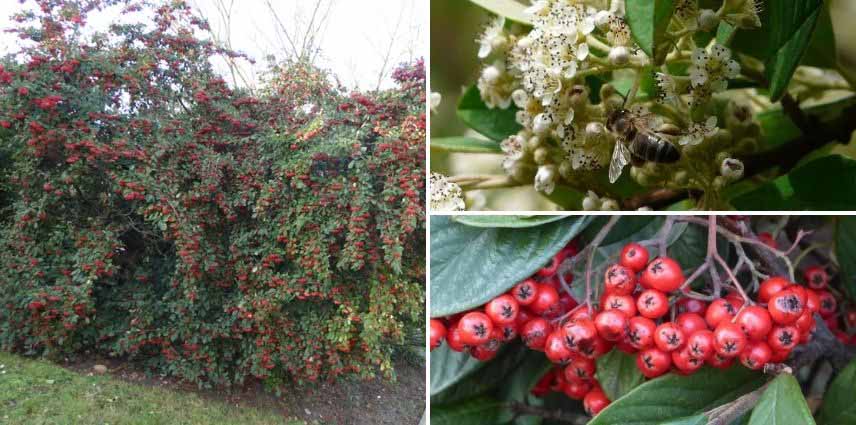
Cotoneaster lacteus establishes and prospers in many soil types and aspects
Discover other Shrubs
View all →Available in 1 sizes
Available in 2 sizes
Available in 1 sizes
Available in 1 sizes
Available in 0 sizes
Available in 1 sizes
Available in 1 sizes
Available in 1 sizes
Available in 1 sizes
Available in 1 sizes
Hypericum densiflorum 'Buttercup'
Shrubby St John’s-wort ‘Buttercup’ originates from Europe and is, like all St John’s-worts, an ultra-easy-to-grow plant, at ease anywhere and generous in flowering.
It is first and foremost a bush with deciduous, dense and particularly fine foliage, a lovely bluish-green that turns yellow in autumn. Yellow is a divisive colour in the garden: some love it while others hate it. But if you appreciate this colour you will not be able to do without this St John’s-wort. Its flowering stretches from June through October with occasional short pauses if conditions are too dry, in the form of small cups of a brilliant golden-yellow. Flowers are followed by conical fruits that are red, then blue-black at ripeness.
This bush has the advantage of growing fairly quickly to reach roughly 1 m in every direction. It thrives in any soil that is not too dry, and tolerates all our climates, even seaside conditions. It is hardy down to -20°C, not very prone to disease and has few pests.
Hypericum densiflorum ‘Buttercup’ is perfect in beds of low bushes and perennials, but can also be considered for a part of an understorey. This bush prefers full sun north of the Loire, but rather partial shade in hot climates, to protect its foliage from scorching by overly harsh sun.
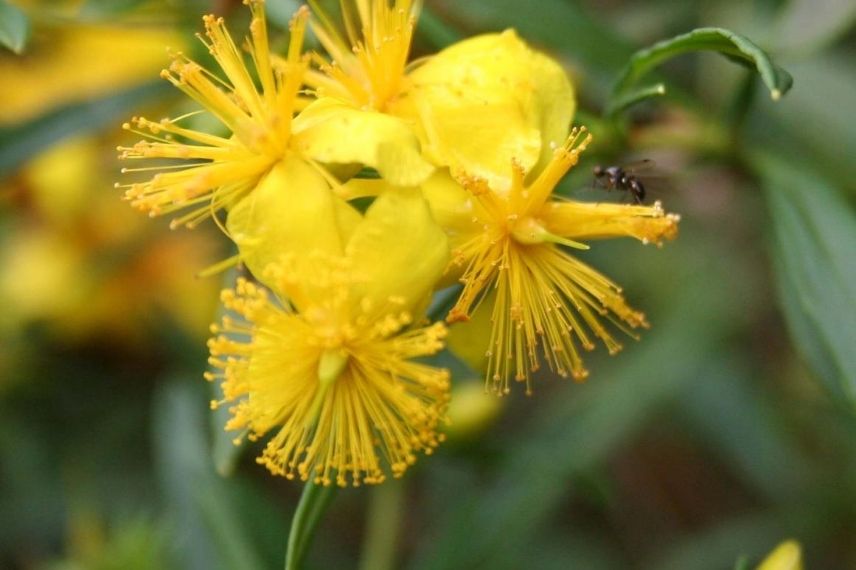
Hypericum densiflorum ‘Buttercup’, a deciduous bush with a long and generous golden-yellow flowering
Read also
12 bushes for dry or free-draining soilLonicera pileata
Le Lonicera pileata, également appelé Chèvrefeuille à cupule ou Chèvrefeuille à feuilles de troène, est un arbuste persistant ou semi-persistant originaire de Chine. C’est un arbuste au port dense et étalé, idéal en couvre-sol. Son feuillage vert et lustré est persistant (sauf lors d’hivers très rigoureux) et se pare en automne de baies sphériques violettes très décoratives après une floraison discrète mais particulièrement parfumée.
Le Chèvrefeuille à cupule est parfait pour réaliser des haies basses en remplacement du buis par exemple mais permet aussi la fixation des talus même sur les sols les plus ingrats ou pour la formation de grandes rocailles. Il supporte sans broncher les tailles les plus sévères, la pollution atmosphérique et la sécheresse.
Le Lonicera pileata peut vivre au soleil dans le Nord, à la mi-ombre partout et même à l’ombre d’un sous-bois. Le chèvrefeuille à cupule apprécie tous les sols même les sols calcaires. Il est en outre très rustique.
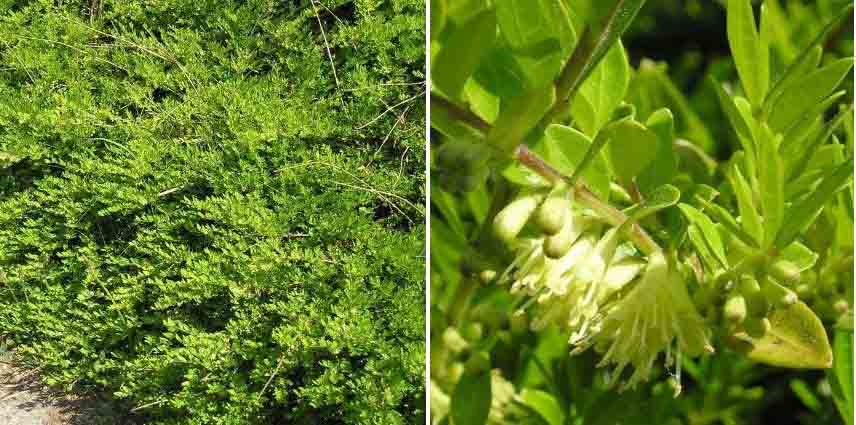
Lonicera pileata, or box honeysuckle, perfect for low hedging, is very hardy
Symphoricarpos doorenbosii 'Magic Berry'
We all have childhood memories of snowberry fruits exploding between our shoe sole and pavement slabs. It was absolutely pointless but great fun! So if you have retained a child’s soul, remember to plant snowberries at home! Yes, but not just any one: Symphoricarpos (x) doorenbosii ‘Magic Berry’ (bless you!) is a small deciduous bush with colourful berries, easier to live with than to pronounce its full name.
This is a very fruit-bearing snowberry that rewards with berries almost multicoloured, coloured red, purple, pink and even pale pink and which often persist on the stems until mid-winter. Foliage is deciduous and leaves are dark green above but turn yellow before falling. Spring flowering, although very discreet to human eyes, attracts pollinators.
Snowberries grow very quickly and ‘Magic Berry’ is no exception. It will rapidly reach its 1.20 m standard height, an ideal size for placing in a small informal hedge, in a large mixed border, in a rockery and even in a pot on a balcony or terrace. If its verticality is sometimes compromised, that is not the case for its lateral growth, which has no theoretical limit thanks to its stump producing suckers.
This ‘Magic Berry’ snowberry is a robust and extremely hardy bush. It is able to adapt to many growing conditions. It also suits all regions, nothing fazes it, whether mountain winter rigour or Mediterranean summer heat (but in that case plant in greater shade).

Symphoricarpos doorenbosii ‘Magic Berry’, thrives in many situations and becomes covered with multicoloured berries in winter: snowberries are magnificent in cold season with their graceful berries (right, a white snowberry)
Buddleia alternifolia
Buddleia alternifolia has nothing to do with its cousin Buddleia davidii, a species classed as invasive. (please note: commercially sold Buddleia davidii are, in any case and for the vast majority, sterile cultivars to avoid this problem). Read our article to learn more about this: Invasive, dangerous for butterflies… Should we really be afraid of Buddleia?
Here we are talking about the alternate-leaved Butterfly bush, a large bush native to China with a very slight, elegant weeping habit. It is covered in summer with pale lilac-pink flowers slightly tinged with blue that delight the eye and provide nectar for many species of butterflies and other insects. Its silvery grey-green, lanceolate foliage is deciduous and arranged alternately along the branches, hence the species name: alternifolia.
It grows quickly and reaches a height of 3 metres with a spread of 4 metres in just five years.
Extremely hardy, Buddleia alternifolia favours full sun but also grows in partial shade. Regarding soil, it prefers a light, fertile, cool but well-drained soil though it will tolerate poor or heavy soil. It is also very tolerant of heat and drought.
Very easy to cultivate, the alternate-leaved Butterfly bush is best displayed as a solitary planting to show off its weeping habit or in a border combined with other bushes and perennial plants. It suffers from no particular diseases or pests and requires little maintenance: simple late-winter pruning to remove half the branching and cut out any dead wood and that’s all.
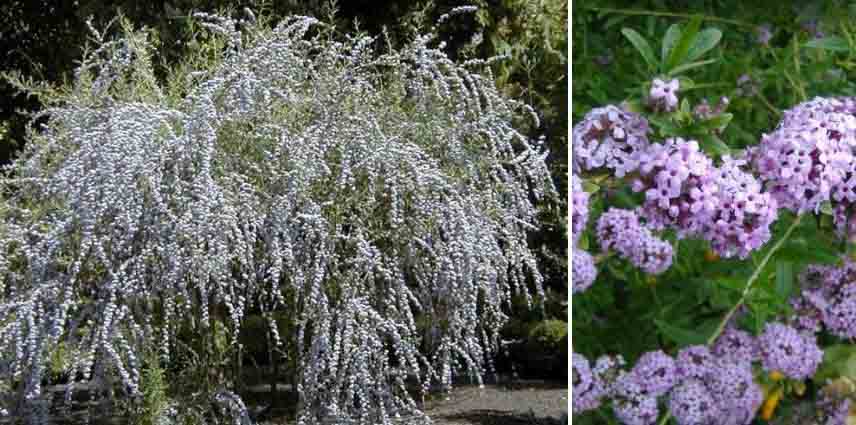
Buddleia alternifolia, a slender sun-loving bush, tolerant of high temperatures
Elaeagnus umbellata
Native to Himalayas, Elaeagnus umbellata is also known as autumn olive or autumn chalef. This deciduous bush, sometimes semi-evergreen or marcescent in mild climate, grows very quickly to reach 4 m in height and is very hardy. Leaves are green, more or less bluish and matte above, underside lighter, silvery and satin-like. Its discreet spring flowering reveals a honey scent, noticeable several metres away. But its autumn fruiting, which often appeals to greedy gardeners: flowering gives way to small fruits of a beautiful red punctate with silver at ripeness. They are edible, sweet and tangy, and particularly rich in vitamins and antioxidants.
Its vigour, resistance and great adaptability make chalef an excellent plant for country hedges, windbreaks or fruiting hedges. It resists cold, calcareous conditions, poor soils, drought and even… wind of seaside gardens. That shows how unfussy it is!
Elaeagnus umbellata can be planted in any soil, even calcareous, sandy, occasionally dry in summer, damp or cool. Once well established, it can do entirely without watering, even in hot, dry regions. It will prosper in partial shade (in warm climate) or in sun, even in windy situations.
Note that root system of Elaeagnus is able to fix nitrogen in soil, thus helping to enrich poor soils.
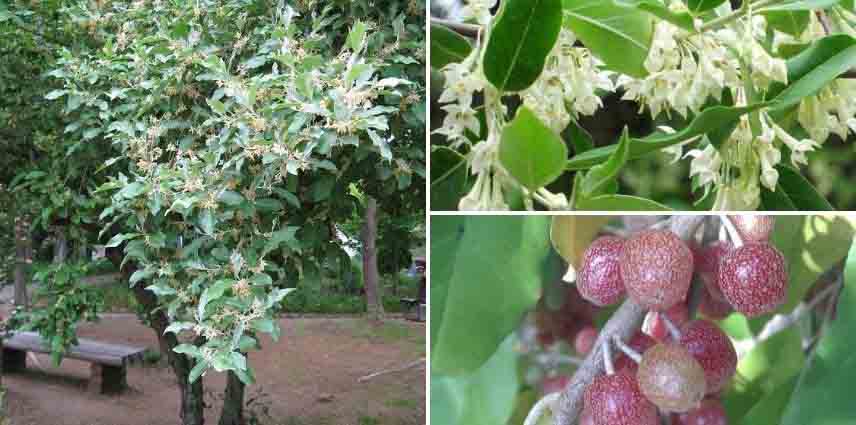
Elaeagnus umbellata, or autumn chalef, a species with satin-like foliage very resistant, notably by the seaside
7 indestructible bushes, that's not much...
Of course, this is not an exhaustive list and there are many other bushes reputed to be virtually indestructible. We also encourage you, dear readers, to share your own suggestions for virtually indestructible bushes in the comments! That will surely help other gardeners with future choices.
- Subscribe!
- Contents
